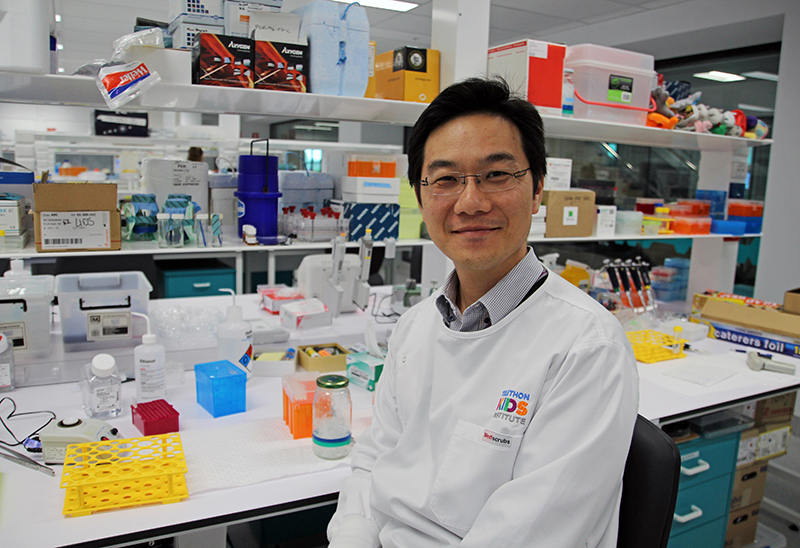
Dr Laurence Cheung is doing everything he can to end the threat of childhood leukemia. His research has the potential to change countless lives, but he also has another important job – being a dad to three beautiful children.
Having spent his early years in Hong Kong, Dr Laurence Cheung relocated to Perth in 1997 to attend university, and went on to pursue a career as a community pharmacist. It was then that he first came into contact with parents whose children were suffering as a result of the side effects of leukemia treatment.
‘It was incredibly sad to see the sort of pain these children were going through. I was always interested in finding cures for diseases and, after eight years of practising as a pharmacist, I made the decision to move into medical research with the aim of taking my research from bench-to-bedside. I’m glad I did it - this career gives me the ability to make a difference.’
Leukaemia is the most common form of cancer in children, and since moving into research, Laurence has been working hard to find new ways to treat acute lymphoblastic leukemia (ALL), which is the most common form of leukaemia in children.
‘Remarkable improvements have been made to therapy over the past sixty years and modern treatment protocols for children achieve cure rates in more than 90 per cent of patients,’ says Laurence. ‘However, there remain several high-risk genetic subgroups whose outcomes remain poorer, with children from certain groups having less than 40 per cent chance of survival.’
‘Better therapies are desperately needed. My research studies the development of high-risk ALL within the bone marrow and the interaction of leukaemia cells with the neighbouring cells within the bone marrow. By targeting cells surrounding the leukaemia cells, we’re aiming to reduce the impact of cancer and lessen the short- and long-term side effects of traditional treatments for all children diagnosed with ALL.’
Laurence believes that targeting both cancer cells and surrounding cells will result in a more effective therapeutic strategy to treat patients, particularly for children with high-risk leukaemia in which dose-limiting toxicities of conventional chemotherapy has prevented further improvements.
In the lab, Laurence spends his days trying to find ways to save countless little lives, but at home his role is very different. A dad to three children, son Princeton, 10, and twin girls Vienna and Ivanna, 8, Laurence spends a lot of his spare time enjoying family life and playing tennis with his son.
‘My children don’t fully understand my work yet, but they’ve been to the lab and they’re really curious about what goes on there. Maintaining a work-life balance can be a challenge. I tend to start my day very early in the morning so that I can come home before dark and spend some time with everyone.’
‘As a father, I’m reminded every day how fortunate I am to have healthy, happy children. Every parent’s wish is to be able to spend quality time with their kids and watch them grow. It’s incredibly important to me that families whose children are diagnosed with cancer don’t have those opportunities taken away. That’s what keeps me motivated to find a cure.’
Although Laurence doesn’t yet have any plans for Father’s Day this year, he does have one special wish.
"My real, driving hope is that we can one day put an end to childhood cancer, so that every parent has the chance to enjoy a joyful journey with their children."
September marks not only Father’s Day but also Childhood Cancer Awareness Month. This story first appeared on the Cure Cancer website.
